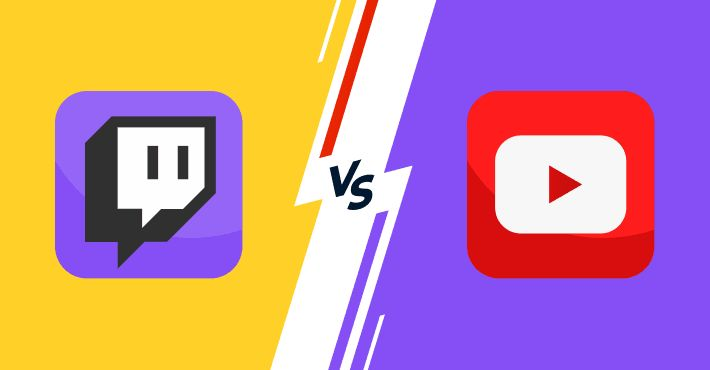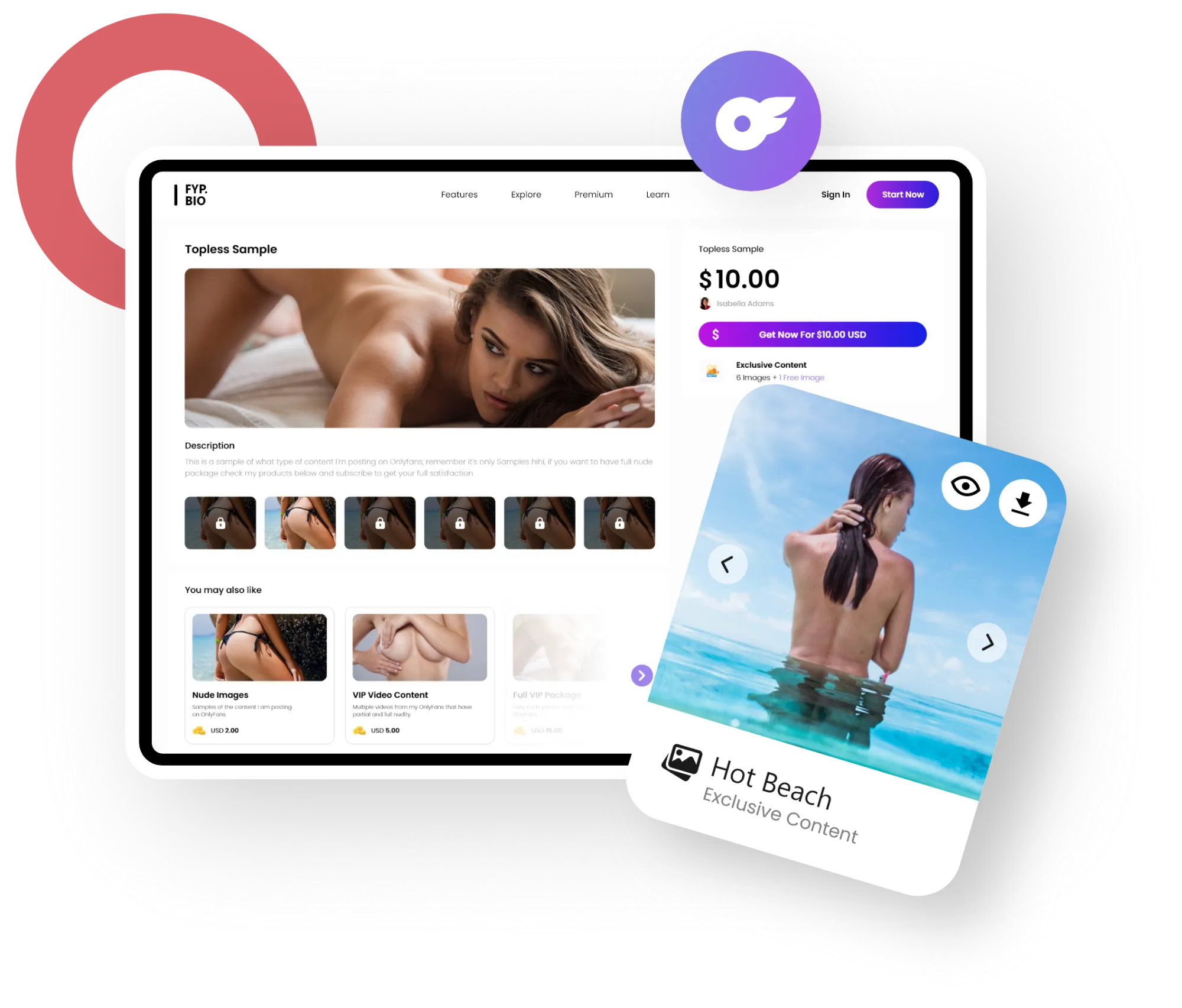Twitch vs. YouTube Streaming (2024)

In recent years, live streaming has become increasingly popular as a means of entertainment and a way for content creators to engage with their audience in real-time. Twitch and YouTube are two of the most prominent platforms for live streaming, each offering unique features and benefits to users. In this blog, we will compare the pros and cons of Twitch and YouTube streaming, provide guidance on choosing the best platform for your needs, and address some frequently asked questions.
Pros and Cons of Twitch Streaming:

Twitch is a live streaming platform primarily focused on gaming content but has expanded to include various other categories such as art, music, and talk shows. Here are some of the pros and cons of streaming on Twitch:
Pros:
- Community: Twitch has a strong sense of community, with viewers and streamers frequently interacting through chat, emotes, and donations.
- Monetization options: Twitch offers multiple ways for streamers to earn money, including subscriptions, donations, ad revenue, and sponsorships.
- Affiliate and Partner programs: Twitch's Affiliate and Partner programs provide additional benefits to qualifying streamers, such as custom emotes, a higher percentage of ad revenue, and the ability to run ads.
- Link in bio tools: Streamers can utilize link in bio tools, like FYP.bio, in their profile description to direct viewers to their other social media profiles, merchandise, and more.

FYP.bio is an advanced link in bio tool that allows you to aggregate all of your links, including but not limited to social media profiles, products, websites, and everything else.
What is a Link In Bio Tool?
Link in bio tools are used to optimize the use of the "link in bio" feature on social media platforms, especially Instagram. These tools allow users to create a custom landing page with multiple clickable links that can be easily shared with their audience. This enable
s businesses, influencers, and content creators to drive traffic to multiple websites, products, or services from a single link in their Instagram bio.
FYP.bio is the easiest link in bio tool website. The unique monetization tools can turn your bio page into a storefront where your followers can purchase content, cameos, 1:1 calls, community access, and more.

FYP.bio is known by many creators as the place where visionaries build empires.
The best part is it’s completely free to use and publish with advanced customization features.
Cons:
- Discoverability: Twitch's algorithm makes it challenging for new streamers to gain visibility, as popular channels are often prioritized.
- Platform limitations: Twitch is primarily focused on live content, and while there are options for hosting and showcasing past streams, they are not as prominent or user-friendly as YouTube's video platform.
- Content restrictions: Twitch has stricter content guidelines than YouTube, which may limit the type of content you can stream.
Pros and Cons of YouTube Streaming

YouTube, known primarily for its video sharing platform, has also become a popular destination for live streaming. Here are some of the pros and cons of streaming on YouTube:
Pros:
- Discoverability: YouTube's algorithm can help new streamers gain visibility, as live streams are often recommended alongside related videos, increasing the chances of attracting a larger audience.
- Video integration: YouTube seamlessly integrates live streaming with its video platform, allowing creators to build a library of content that viewers can easily access.
- Monetization options: YouTube offers various monetization options, including ad revenue, Super Chat donations, and channel memberships.
- Link in bio tools: YouTube creators can add links to their video descriptions and channel banners, directing viewers to their other social media profiles, merchandise, and more. Utilizing FYP.bio can bring attention to your other projects as well as allowing you to potentially earn profit from your most loyal viewers
Cons:
- Less community focus: YouTube's live streaming community may not feel as tight-knit or interactive as Twitch's, which can impact viewer engagement.
- Monetization threshold: YouTube requires creators to reach specific thresholds, such as 1,000 subscribers and 4,000 watch hours, to access monetization features.
- Copyright issues: YouTube's Content ID system can be overly aggressive, leading to potential issues with copyright claims, even for content used with permission or under fair use.
Questions to Ask Yourself:

When deciding between Twitch and YouTube for streaming, consider the following questions:
- What type of content do you plan to create?
- How important is community interaction and engagement to your streaming experience?
- What are your goals for monetization, and how quickly do you want to access monetization features?
- How much do you value discoverability and the potential to reach a larger audience?
- Are you planning to focus solely on live streaming, or do you want to create and showcase additional video content?
By answering these questions, you can better determine which platform aligns with your content, goals, and preferences.
FAQs
Can I stream on both Twitch and YouTube simultaneously?

Yes, you can use third-party tools like Restream or Streamlabs OBS to stream on multiple platforms simultaneously. However, keep in mind that Twitch's Affiliate and Partner agreements may prohibit you from streaming to other platforms concurrently.
Is it possible to switch platforms later on?

Yes, you can switch between Twitch and YouTube (or other platforms) at any time. However, it's essential to consider the impact on your audience and the time and effort required to rebuild your community on a new platform.
Which platform has better video quality and streaming stability?

Both Twitch and YouTube offer high-quality streaming options, with YouTube supporting resolutions up to 4K and Twitch up to 1080p. Stability largely depends on your internet connection and streaming settings, and both platforms provide a reliable streaming experience overall.
Do I need special software to stream on Twitch or YouTube?

To stream on either platform, you'll need streaming software like OBS Studio, Streamlabs OBS, or XSplit. These tools capture your video and audio content and transmit it to the platform's servers for live streaming.
Can I monetize my live streams through other methods, like Patreon or merchandise sales?

Yes, you can utilize additional monetization methods like Patreon, merchandise sales, and sponsorships, regardless of your chosen streaming platform. Be sure to take advantage of FYP.bio, video descriptions, and channel banners to direct viewers to these external monetization options.
Conclusion:
As live streaming continues to grow in popularity, content creators are faced with the decision of choosing the right platform for their needs. Twitch stands out for its strong sense of community and extensive monetization options, while YouTube shines with its discoverability and seamless video integration. To make the best choice, it's essential to consider your content, goals, and preferences, and ask yourself critical questions to determine which platform aligns with your vision.
Don't forget the importance of link in bio tools, like FYP.bio, which can help drive traffic to your other projects and enhance monetization opportunities.
Overall, both Twitch and YouTube have their own unique advantages, and the choice between them ultimately depends on your specific needs and aspirations as a content creator. By carefully weighing the pros and cons, asking yourself the right questions, and making informed decisions, you can establish a successful streaming presence and create a thriving community around your content.
